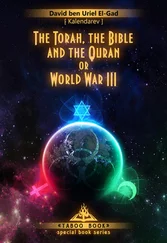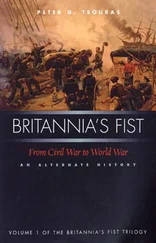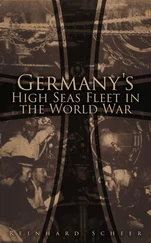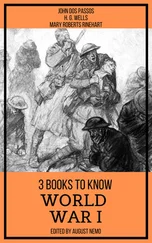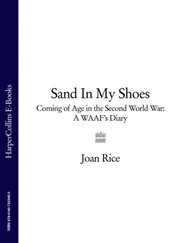6. Hopkins, Australian Armour , p. 313.
7. See Chapter 2.
8. Major General Percy Hobart was a strong advocate of the use of tanks, and it was he who trained the 7th and 11th Armoured Divisions, at various times the best tank divisions in the British Army. But he was so forceful in his views that he discouraged many potential tank supporters. He also promulgated the concept of armour working independently and the equally unfortunate concept of tanks firing on the move, rather than using fire and movement See Kenneth Macksey, Armoured crusader: a biography of Major General Sir Percy Hobart, Hutchinson, London, 1967.
9. Duncan gave distinguished service as a tank officer in World War II, commanding a brigade in the 79th Armoured Division. He remained influential in British armoured circles after World War II.
10. Beale, Death by Design , pp. 176–177.
11. See Chapter 3 for the complete text of this agendum.
12. Hopkins, Australian Armour , p. 331.
13. NAA A5954 805/1 folio 516 War Cabinet Minute 689.
14. Hopkins, Australian Armour, p. 75.
15. Wigmore, The Japanese Thrust .
16. Perrett, Tank tracks to Rangoon.
17. Long, To Benghazi , p. 83.
18. War Cabinet Agendum 150/1940, NAA A2671.
19. NAA A5954 587/2 History of tank production in Australia .
20. British tank manufacture was especially prone to underestimate the time required for trialling. Sometimes, as in the case of the Churchill tank (A22), the underestimate was due to political pressure. David Fletcher, The Great Tank Scandal , p. 58, has this to say: ‘The Prime Minister took a special interest in this tank which in due course was to bear his name, but it was a mixed blessing. When the first order was placed on 1 July 1940 he demanded that 500 should be completed by March of the following year, despite a warning from the Director of Tanks and Transport that this was quite impossible, since nine months was just half the usual time required to produce the prototype of a brand new tank from the drawing board. In an attempt to satisfy this urge for haste it was decided to go straight into production from the drawing board. This bypassed the normal practice of building and thoroughly testing prototypes first. Such a course, which is anathema to any respectable engineer, could only be justified by the circumstances, and one engineer, when told that there would be no prototypes said that on the contrary there would be 500 of them!’ The prediction of 500 prototypes was quite correct. The first Churchills were issued to field units in June 1941, and for at least the next eighteen months they were a fitter’s nightmare and would have been so unreliable in action as to have been a disaster. That disaster was realised in the mainly Canadian attack on Dieppe on 19 August 1942.
21. Hopkins, Australian Armour , p. 108.
22. AWM54 591/7/25.
23. A TEWT is a Tactical Exercise Without Troops. As this implies, it was carried out by commanders only, without troops or weapons. It was normally held on the ground, and tactical problems would be posed, discussed and the answers analysed. In this way commanders could work out how to deal with a tactical problem without being in the field with all equipment, an expensive and time-consuming operation. In a sand-table exercise the ground was represented by a model, but the procedure was the same.
24. Hopkins, Australian Armour , pp. 182–184.
25. Lewin, Man of Armour , pp. 107–109.
26. A good description of all the types of tanks used by 79 Armoured Division is contained in Fletcher, Vanguard of Victory.
27. This account of the modus operandi of 79 Armoured Div was contained in a personal communication from David Fletcher, Historian at the Tank Museum Library, Bovington, UK. David is the author of many books on armoured warfare. See also Nigel Duncan, 79 thArmoured Division, Hobo’s funnies, Windsor, Profile Publications, 1972.
28. Beale Death by Design. The book as a whole recounts the incompetent way in which the British Army designed, built, and used tanks in World War II. Chapter 3 deals specifically with British tank development from 1919 to 1945.
Australian Army, Operations of Armoured Forces, Western Desert , Army Headquarters, Melbourne, 1941.
Australian Army, The Army War Effort , Australian Military Forces, 1944.
Director-General of Manpower, The Control of Manpower in Australia , Australian Manpower Directorate, Canberra, 1945.
Beale, Peter, Death by Design, Sutton Publishing, UK, 1998.
Beale, Peter, Infighter: 9th Battalion Tank Corps 1916-1919, privately published, Valentine, NSW, 2004.
Bean, C.E.W., The AIF in France , vol. IV of the Official History of Australia in the War of 1914-1918 , University of Queensland Press, 1982.
Bean, C.E.W., The AIF in France , vol. VI of the Official History of Australia in the War of 1914-1918 , University of Queensland Press, 1983.
Blair, Clay, MacArthur , Futura, London, 1977.
Brune, Peter, A Bastard of a Place , Allen & Unwin, Sydney, 2004.
Brune, Peter, Those Ragged Bloody Heroes , Allen & Unwin, Sydney, 1991.
Bryant, Arthur, The Turn of the Tide , Collins, London, 1957.
Butlin, S.J., The War Economy 1939-1942 , Australian War Memorial, Canberra, 1955.
Butlin, S.J. and Schedvin, C.B., The War Economy, 1939-1945 , Australian War Memorial, Canberra,1977.
Chapman, Ivan, Iven G. Mackay , Melway Publishing, Melbourne, 1975.
Charlton, Peter, The Unnecessary War , Macmillan Australia, Melbourne, 1983.
Churchill, Winston, The Second World War , Cassell, London, 1949.
Day, David, Menzies and Churchill at War , Paragon House, New York, 1988.
Dexter, David, The New Guinea Offensives , Australian War Memorial, Canberra, 1961.
Dickens, Gordon, Never Late: 2/9 Australian Infantry Battalion 1939-1945 , Australian Military History Publications, Sydney, 2005.
Donovan, P.F., Waltzing Matildas: 2/9 Aust Armd Regimental Group , Blackwood, South Australia, 1988.
Ellis, Chris, and Chamberlain, Peter, German tanks and fighting vehicles of World War II , Phoebus, London, 1976.
Ellis, John, The Sharp End of War , David & Charles, London, 1980.
Ellis, John, Brute Force , Andre Deutsch, London, 1990.
Falls, Cyril, The Great War 1914-1918 , Perigee, New York, 1959.
Fletcher, David, The Great Tank Scandal , HMSO, London, 1989.
Fletcher, David, The Universal Tank , HMSO, London, 1993.
Fletcher, David, The British Tanks 1915-19 , Crowood Press, Marlborough, 2001.
Fletcher, David, and Sarson, Peter, Matilda , Osprey, London, nd.
Forty, George, The First Victory , Guild Publishing, London, 1990.
Forty, George, Tank Commanders , Motorbooks International, USA, 1993.
Gallaway, Jack, The odd couple: Blamey and MacArthur at War , University of Queensland Press, 2000.
Gordon, Harry, An Eyewitness History of Australia , Penguin, Melbourne, 1976.
Grinyer, Norman Robert, The 2/7th Australian Cavalry Regiment , Daram Printing, Sydney, 1974.
Gudmundsson, Bruce I., On Armor , Praeger, Westport, Connecticut, 2004.
Handel, Paul, Dust, Sand, and Jungle , Australian Military History Publications, Sydney, 2003.
Handel, Paul, The vital factor: a history of the 2/6th Aust Armd Regt , Australian Military History Publications, Sydney, 2004.
Читать дальше

